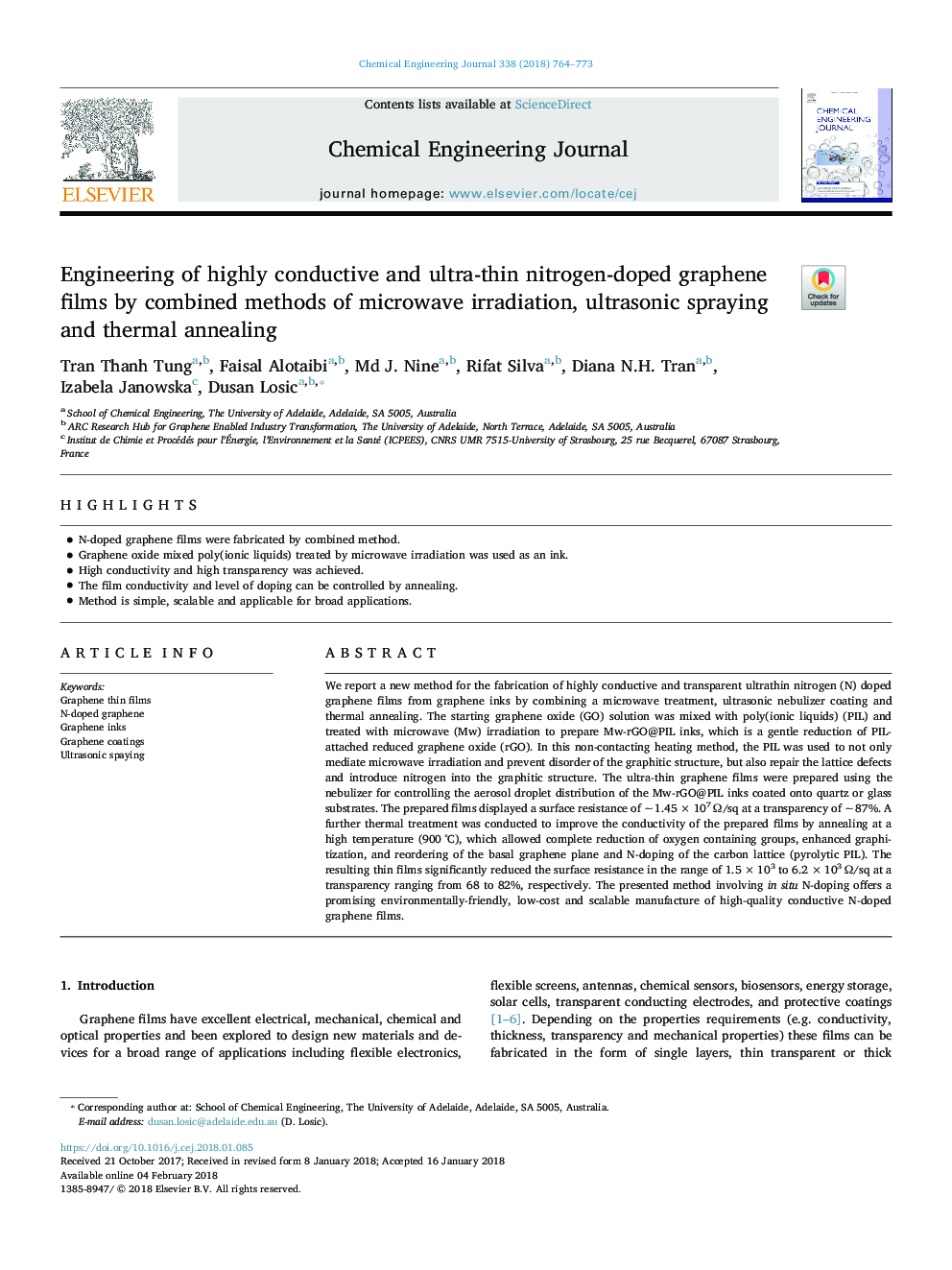| Article ID | Journal | Published Year | Pages | File Type |
|---|---|---|---|---|
| 6580376 | Chemical Engineering Journal | 2018 | 10 Pages |
Abstract
We report a new method for the fabrication of highly conductive and transparent ultrathin nitrogen (N) doped graphene films from graphene inks by combining a microwave treatment, ultrasonic nebulizer coating and thermal annealing. The starting graphene oxide (GO) solution was mixed with poly(ionic liquids) (PIL) and treated with microwave (Mw) irradiation to prepare Mw-rGO@PIL inks, which is a gentle reduction of PIL-attached reduced graphene oxide (rGO). In this non-contacting heating method, the PIL was used to not only mediate microwave irradiation and prevent disorder of the graphitic structure, but also repair the lattice defects and introduce nitrogen into the graphitic structure. The ultra-thin graphene films were prepared using the nebulizer for controlling the aerosol droplet distribution of the Mw-rGO@PIL inks coated onto quartz or glass substrates. The prepared films displayed a surface resistance of â¼1.45â¯Ãâ¯107â¯Î©/sq at a transparency of â¼87%. A further thermal treatment was conducted to improve the conductivity of the prepared films by annealing at a high temperature (900â¯Â°C), which allowed complete reduction of oxygen containing groups, enhanced graphitization, and reordering of the basal graphene plane and N-doping of the carbon lattice (pyrolytic PIL). The resulting thin films significantly reduced the surface resistance in the range of 1.5â¯Ãâ¯103 to 6.2â¯Ãâ¯103â¯Î©/sq at a transparency ranging from 68 to 82%, respectively. The presented method involving in situ N-doping offers a promising environmentally-friendly, low-cost and scalable manufacture of high-quality conductive N-doped graphene films.
Keywords
Related Topics
Physical Sciences and Engineering
Chemical Engineering
Chemical Engineering (General)
Authors
Tran Thanh Tung, Faisal Alotaibi, Md J. Nine, Rifat Silva, Diana N.H. Tran, Izabela Janowska, Dusan Losic,
